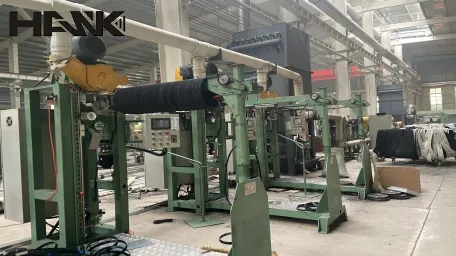- Arabic
- French
- Russian
- Spanish
- Portuguese
- Turkish
- Armenian
- English
- Albanian
- Amharic
- Azerbaijani
- Basque
- Belarusian
- Bengali
- Bosnian
- Bulgarian
- Catalan
- Cebuano
- Corsican
- Croatian
- Czech
- Danish
- Dutch
- Afrikaans
- Esperanto
- Estonian
- Finnish
- Frisian
- Galician
- Georgian
- German
- Greek
- Gujarati
- Haitian Creole
- hausa
- hawaiian
- Hebrew
- Hindi
- Miao
- Hungarian
- Icelandic
- igbo
- Indonesian
- irish
- Italian
- Japanese
- Javanese
- Kannada
- kazakh
- Khmer
- Rwandese
- Korean
- Kurdish
- Kyrgyz
- Lao
- Latin
- Latvian
- Lithuanian
- Luxembourgish
- Macedonian
- Malgashi
- Malay
- Malayalam
- Maltese
- Maori
- Marathi
- Mongolian
- Myanmar
- Nepali
- Norwegian
- Norwegian
- Occitan
- Pashto
- Persian
- Polish
- Punjabi
- Romanian
- Samoan
- Scottish Gaelic
- Serbian
- Sesotho
- Shona
- Sindhi
- Sinhala
- Slovak
- Slovenian
- Somali
- Sundanese
- Swahili
- Swedish
- Tagalog
- Tajik
- Tamil
- Tatar
- Telugu
- Thai
- Turkmen
- Ukrainian
- Urdu
- Uighur
- Uzbek
- Vietnamese
- Welsh
- Bantu
- Yiddish
- Yoruba
- Zulu
Sep . 22, 2024 08:47 Back to list
timing belt faq
Timing Belt FAQ Understanding its Importance and Maintenance
A timing belt is a crucial component in an internal combustion engine, ensuring that the engine's valves open and close at the proper times during each cylinder's intake and exhaust strokes. This synchronization is vital for optimal engine performance; thus, understanding more about timing belts is essential for any vehicle owner.
What Is a Timing Belt?
The timing belt is a rubber belt with teeth that connects the crankshaft to the camshaft(s). It plays a significant role in maintaining the engine's timing, ensuring that the pistons move in harmony with the opening and closing of the valves. A properly functioning timing belt is critical to the engine's performance and efficiency.
When Should You Replace Your Timing Belt?
Most manufacturers recommend replacing the timing belt every 60,000 to 100,000 miles, although this can vary based on the specific make and model of the vehicle. It's essential to consult your owner's manual for the manufacturer's guidelines. Failure to replace a worn-out timing belt can lead to catastrophic engine damage, including bent valves or a damaged engine, which can be costly to repair.
What Are the Signs of a Worn Timing Belt?
While many timing belts do not provide warning signs before they fail, several indicators may suggest that your timing belt is nearing the end of its lifespan. These signs include
1. Engine Misfiring If your engine is running unevenly or misfiring, it may indicate that the timing is off, often due to a worn timing belt. 2. Unusual Noises A ticking or squeaking sound coming from the engine can signal that the timing belt is loose or damaged. 3. Oil Leakage If you notice oil spots near the front of your engine, it could indicate a seal failure related to the timing belt.
timing belt faq

How Can You Extend the Life of Your Timing Belt?
Regular maintenance is key to extending the life of your timing belt. Here are beneficial tips
- Routine Inspections Have your timing belt inspected at regular intervals, especially if you are approaching the mileage threshold for replacement. - Follow Manufacturer's Recommendations Adhere strictly to the suggested maintenance schedule found in your vehicle's manual. - Consider Replacing Other Components When replacing the timing belt, consider replacing other related components, such as the water pump, as they often have similar lifespans and can save you money in the long run by avoiding repeated labor costs.
What Happens if the Timing Belt Breaks?
If a timing belt breaks while driving, the engine will stop working immediately, which can be particularly dangerous if you're on the highway. More significantly, in interference engines, the pistons may collide with the valves, causing severe internal damage. In contrast, non-interference engines may simply stop working without severe damage, but this is less common.
Conclusion
Understanding the role of the timing belt in your vehicle is vital for maintaining the engine's health and performance. Regular inspections, timely replacements, and attention to any warning signs will help ensure that your engine runs smoothly for years to come. Always refer to your vehicle’s manual or consult a trusted mechanic for advice tailored specifically to your car’s needs.
-
Korean Auto Parts Timing Belt 24312-37500 For Hyundai/Kia
NewsMar.07,2025
-
7PK2300 90916-T2024 RIBBED BELT POLY V BELT PK BELT
NewsMar.07,2025
-
Chinese Auto Belt Factory 310-2M-22 For BMW/Mercedes-Benz
NewsMar.07,2025
-
Chinese Auto Belt Factory 310-2M-22 For BMW/Mercedes-Benz
NewsMar.07,2025
-
90916-02660 PK Belt 6PK1680 For Toyota
NewsMar.07,2025
-
drive belt serpentine belt
NewsMar.07,2025

